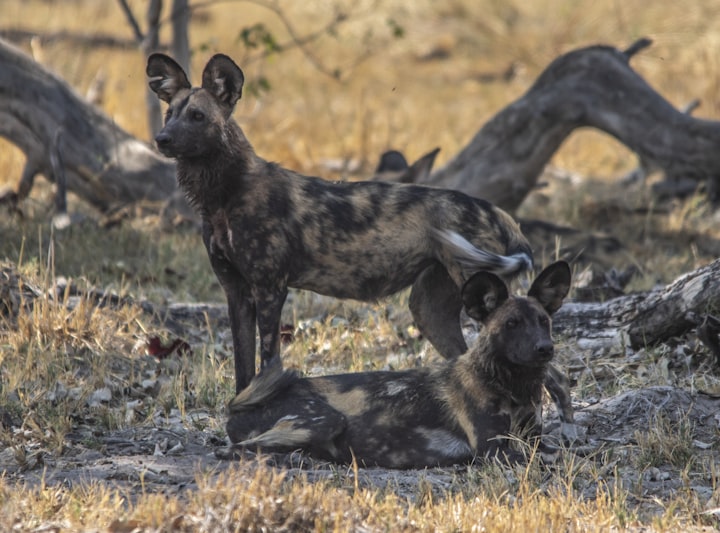What you know about the dodo is wrong
is this really the case?

Read the novel "Alice's Adventures in Wonderland" or see the movie "Alice in Wonderland" friends should be able to accurately write the "Dodo" three words. This name, people who like to watch Japanese or Western animation will not be unfamiliar: with Japan's "Pokémon" and "Nobita and the Island of Miracles", the United States of America's "Ice Age" and "Fantastic Pirates", as well as Canada's "animals are crazy" in its image.

In addition to film and television, the image of the dodo has also appeared on the national emblem of Mauritius, the logo of the famous French Bourbon beer, the game "Age of Sail 2" developed by the Japanese company Kouei, as well as on the logos of the Finnish Environmental Association and the Australian Telecommunications Network Supply Company. As a species that has been extinct for more than 300 years, it is a miracle that the dodo has found a place for itself in so many fields, and some have even called them the most famous extinct animal besides the dinosaurs.
The dodo in the anime is not a tough character, and in the real world, this flightless bird disappeared soon after it was discovered by humans, leaving behind many unanswerable mysteries. Let's try to lift the veil and explore this highly revered creature like Van Gogh in death.
The dodo was exterminated by the human stomach?
In September 1598, the Dutch merchant ship Amsterdam was forced to drift to the island of Mauritius today due to a storm. The crew that boarded the island saw the dodo for the first time. A few decades later, the dodo that once dotted the island of Mauritius completely disappeared. It has been speculated that the crew found the meat of the dodo delicious and told the others, so people came to enjoy it. The flightless dodos, with nowhere to hide, all ended up in the bellies of humans.
However, is this the case?
Someone found the diary of a crew member back then, which wrote that the meat of the dodo was too coarse and could only be eaten if it was not cooked, and there was a lot of oil, and the crew would feel very greasy without eating much, and could not eat anymore.
We know, before the refrigerator, the ship in sea when sailing, how to give food preservation is always a very difficult problem, the crew often had to rely on expired or even rotten food to fill their hunger. The crew of the Amsterdam had been at sea for three weeks, and it was reasonable to assume that fresh bird meat would be a delicacy for them, or at least not unpleasant to eat. But the dodo's meat was defined as "inedible" by the hungry crew, so the degree of bad can be imagined.
Since the meat of the dodo is not good, what caused their rapid extinction decades after their discovery by humans?
Archaeologists have found a large number of bones of domestic pigs on the island of Mauritius. Considering the omnivorous nature of pigs, archaeologists believe that some of these domestic pigs escaped from human control and became free animals on the island, starting to compete with the dodo for territory and food and began to eat the eggs laid on the ground by the dodo.
Before the arrival of humans, there had never been any large mammals on Mauritius, so the dodos were powerless against the sudden appearance of domestic pigs and had to watch their eggs being eaten one by one and their territory being occupied one by one. As a result, the number of dodos was drastically reduced, and the deforestation by humans also deprived them of their basic living environment, eventually leading to extinction.

But other archaeologists have found very different evidence in the southern part of the island of Mauritius: in a very large animal burial site, there are a large number of the dodo and other wild animal skeletons, but no trace of domestic animals. The discoverers thus came up with a new idea: so many animals died together that they were probably hit by a natural disaster such as a tornado or flood, before humans and domestic animals arrived. In other words, the arrival of humans only accelerated the extinction of the dodo and was not the main cause.
Which of these two statements is more accurate? Let's look at the time of the dodo's extinction to find the answer.
At present, there are three main statements about the extinction time of the dodo: 1662, 1681, and between 1688 and 1715, even according to the most distant time, the dodo from encounter with humans to extinction, just less than 120 years. And this short period coincides with the beginning of the entry of humans and other species into the island of Mauritius. It can be inferred from this that alien species did have a great impact on the extinction of the dodo. As for tornadoes and floods, although they are very destructive, it would be an exaggeration to say that they can be the main cause of the extinction of a species. Moreover, studies have found that the dodo is a close relative of a type of pigeon in Southeast Asia, which arrived on the island of Mauritius tens of thousands of years ago or even longer. So, who can guarantee that the dodo has not suffered from natural disasters before?
Dodos all meatballs?
After the extinction, let's change the subject to a lighter one and talk about the dodo's figure.
In traditional paintings, the dodo is almost invariably depicted as a bulbous, bloated bird with a bulbous body, and this image has become very popular.
But in the paintings of the Dutch crew back then, the dodo was very slender and even a bit bony. How could the same animal be painted so differently?
Kitchen, a scientist at the National Museum of Scotland, used scattered dodo bones to weigh them in the 1990s, and then used the weight of pigeon-like birds as a reference to deduce that the dodo should be between 10.5 and 17.5 kg.
Not long ago, a research team led by Ernst, a scientist at the Museum of Natural History in Paris, concluded that the dodo weighed around 10 kg by measuring 75 dodo leg bones collected.
However, some people immediately questioned that the femur was heavier than the leg bones and that it should be more accurate to use the femur to estimate. Louchart, a paleornithologist from the University of Lyon, argued that the size of birds can be extreme on islands, either very small or very large and that the largest dodo should weigh 18 kg.
Although controversial, it is easy to see from the results of several studies that the scientific community has determined that the weight of the dodo is around 10 to 18 kg, and even at the lowest value, the dodo is fully considered a large bird. Of course, a large does not equal obesity, like the current ostrich, although huge, but does not give people the feeling of being obese and bulky. Scientists specializing in the study of the dodo believe that the dodo has a pair of sturdy and powerful legs, that move very quickly. As for the dodos that were painted fat, the author was likely influenced by the painting style at that time. Because the Europeans at that time liked to paint domestic animals and other animals to be plumper.
Is it true that the dodo and the giant skullcap are interdependent?

In recent years, scholars have discovered that some animals other than dodos on Mauritius, such as turtles and Mauritian parrots, can also digest the fruit of the giant cranberry tree in their stomachs. It has even been found through experiments that the seeds of the cranial olive tree can germinate on their own, without the help of any animal.
One after another, the relationship between the dodo and the cranial olive became distant at once. Scientists began to think that since the extinction of the dodo was related to the invasion of exotic species, was the decline of the big-flowered skullcap also a factor?
Such speculation was soon confirmed. Researchers found a large number of guavas and weeds in many areas where the olive lives and even found parasites that destroy the seeds of the olive, none of which are native to the island. At the same time, three naturally growing seedlings of the plant were found in a certain area of the island, and there was no trace of the alien species around them. It is easy to see that the giant cranberry is indeed a victim of invasion.
In addition to the three points mentioned above, there are still many mysteries about the dodo, such as the origin of its name, waiting to be solved one by one. At the same time, their rapid extinction is also a wake-up call for us to protect the environment and maintain the ecological balance without delay.
About the Creator
Richard Shurwood
If you wish to succeed, you should use persistence as your good friend, experience as your reference, prudence as your brother and hope as your sentry.






Comments
There are no comments for this story
Be the first to respond and start the conversation.